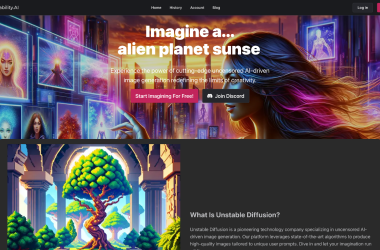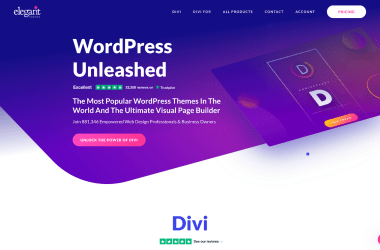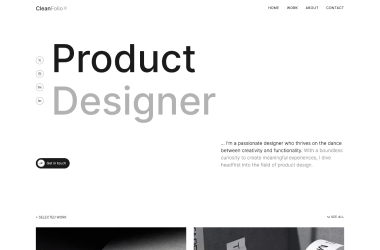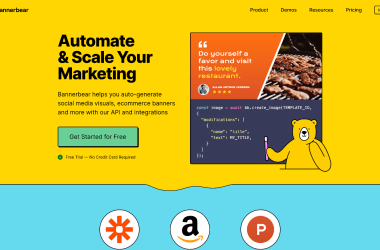Framer is an interactive design tool for websites and prototyping. It excels at building entire marketing sites, landing pages, online campaigns and much more. View all free and paid Framer templates for your next project.
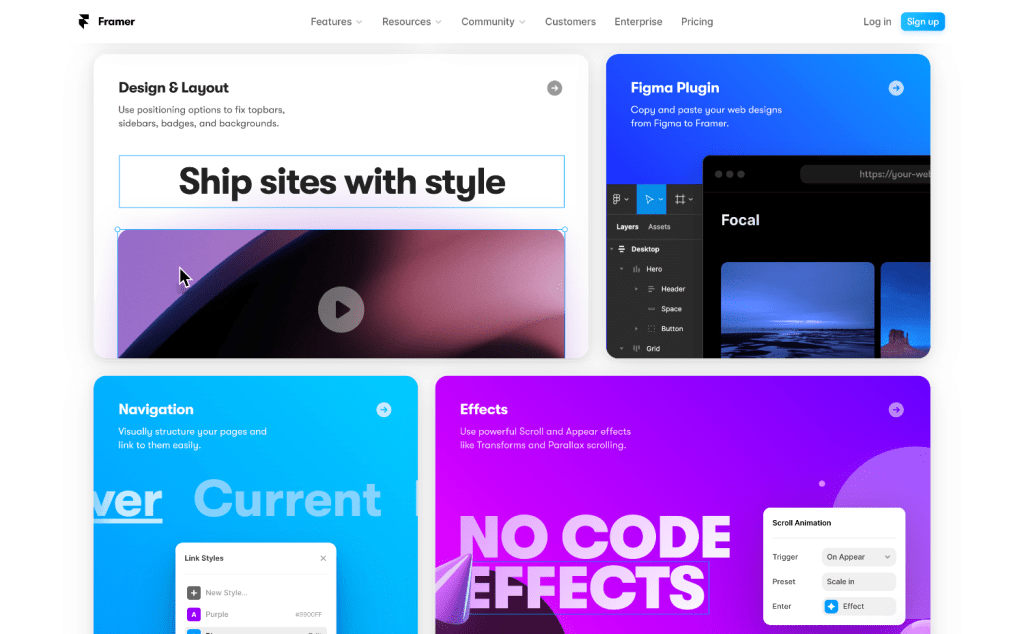
Framer is a dynamic prototyping tool that bridges the gap between design and development. It is especially known for its high-fidelity prototyping capabilities that enable designers to create complex animations and interactive designs.
This tool provides a canvas for designers to not only bring their visual ideas to life but also to incorporate a level of interactivity that closely mimics the final product.
Framer supports a design process that is both iterative and collaborative, with features that facilitate real-time team collaboration and feedback.
While it offers a code-free environment for designers through its intuitive interface, it also allows for custom coding, which is a boon for those who wish to push the limits of their interactive prototypes.
With its comprehensive toolkit for creating responsive designs that can adapt to any device, Framer is tailored for professionals aiming to produce detailed, animated, and testable prototypes.
Here are some key features and aspects of Framer:
- Interactive Prototyping: Framer allows designers to create interactive prototypes that closely mimic the behavior and user interactions of the final product. This includes creating transitions, animations, and gestures to provide a more realistic user experience.
- Components and Libraries: Framer provides a wide range of pre-built components and libraries for building user interfaces. Designers can customize these components to fit their project's requirements.
- Code-Based Design: Framer enables designers to work with code to create designs and interactions. It uses a programming language called CoffeeScript, allowing for advanced customizations and logic-driven interactions.
- Real-Time Collaboration: Framer offers real-time collaboration features, allowing multiple team members to work on the same design project simultaneously. This facilitates collaboration between designers and developers.
- Integration with Design Tools: Framer can be integrated with popular design tools like Sketch and Figma, allowing designers to import their designs directly into Framer for prototyping.
- Design Handoff: Framer includes features for design handoff, making it easier for designers to communicate their design specifications and interactions to developers.
- Device Preview: Designers can preview their prototypes on different devices and screen sizes to ensure that the design and interactions are responsive and visually appealing.
- Testing and User Feedback: Framer supports usability testing by allowing designers to share prototypes with users and collect feedback. This helps in refining the user experience.
- Version Control: Framer provides version control features, allowing designers to track changes and collaborate on design iterations.
- Design Tokens: Designers can define and manage design tokens in Framer to maintain consistency in colors, typography, and other design elements across their projects.
- Team Management: Framer offers team management and access control features, ensuring that the right team members have access to specific design projects.
- Design Handoff to Code: Framer provides tools for exporting design assets and code snippets, making it easier for developers to implement the design in the actual application.
Framer is used by UX/UI designers and design teams to create prototypes that closely resemble the final product, making it a valuable tool for user testing, design validation, and collaboration between designers and developers.
Its emphasis on interactivity and code-based design sets it apart from some other design and prototyping tools, making it a preferred choice for those who want to create highly interactive and dynamic user experiences.
Key insights
- 💻 Learn how to design a website from scratch using Framer, covering the fundamentals of layout, responsiveness, effects, and components.
- 💻 Applying textiles to nav items can be easily done in a component view, allowing for customization of fonts, colors, and styles.
- 🎥 Customizing components and adding hover variants can enhance the user experience of a website.
- 💻 When designing a website in Framer, it's important to keep in mind that tablet and phone breakpoints are variations of a single page, and changes made in the desktop breakpoint will be inherited in the other breakpoints.
- 💻 Adding a max width and padding to a content wrapper can improve the overall look of a website without directly editing breakpoints.
- 💻 Customizing breakpoints in Framer can make the process of tweaking spacing and styles faster and more fun.
- 🎥 Custom enter and exit transitions can be designed for both the backdrop and video within an overlay on a website.
- 💻 Creating a website with a top bar component allows for easy updates across all pages.
